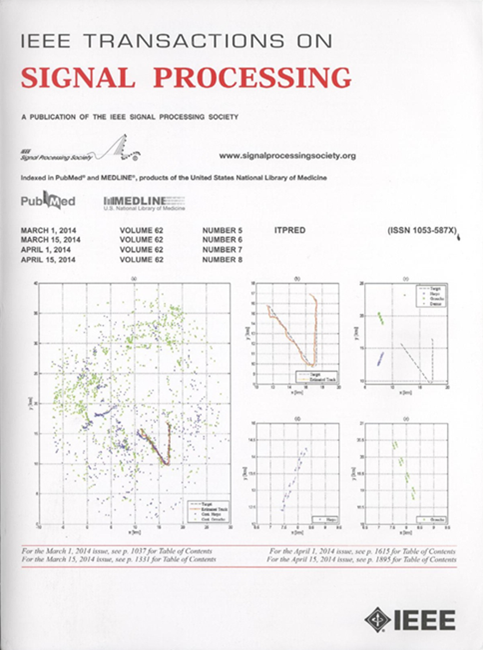基于混合向量消息传递的广义双线性分解
IF 4.6
2区 工程技术
Q1 ENGINEERING, ELECTRICAL & ELECTRONIC
引用次数: 0
摘要
广义双线性分解(GBF),其中两个矩阵从噪声和通常压缩的测量结果中恢复,出现在各种应用中,如盲信道和信号估计,图像补全,压缩视频前景和背景分离。本文通过统一现有的几个双线性逆问题来表述GBF问题,并建立了一种新的混合向量消息传递(HVMP)算法。GBF-HVMP算法通过变分自由能最小化将期望传播(EP)和变分消息传递(VMP)相结合,以封闭形式交换矩阵变量消息。GBF-HVMP在几个方面优于同类产品。例如,矩阵变量消息可以描述矩阵元素之间的相关性,这在标量变量消息传递中是不可能的;EP和VMP的混合产生与GBF问题中固有的双线性约束相关的封闭式高斯消息。结果表明,为了保证收敛性,GBF-HVMP算法不需要阻尼。我们还表明,GBF-HVMP的性能接近副本边界,并且在归一化均方误差(NMSE)性能和计算复杂性方面明显优于最先进的方法。本文章由计算机程序翻译,如有差异,请以英文原文为准。
Generalized Bilinear Factorization via Hybrid Vector Message Passing
Generalized bilinear factorization (GBF), in which two matrices are recovered from noisy and typically compressed measurements of their product, arises in various applications such as blind channel-and-signal estimation, image completion, and compressed video foreground and background separation. In this paper, we formulate the GBF problem by unifying several existing bilinear inverse problems, and establish a novel hybrid vector message passing (HVMP) algorithm for GBF. The GBF-HVMP algorithm integrates expectation propagation (EP) and variational message passing (VMP) via variational free energy minimization, and exchanges matrix-variable messages in closed form. GBF-HVMP is advantageous over its counterparts in several aspects. For example, a matrix-variable message can characterize the correlations between the elements of the matrix, which is not possible in scalar-variable message passing; the hybrid of EP and VMP yields closed-form Gaussian messages associated with the bilinear constraints inherent in the GBF problem. We show that damping is unnecessary for GBF-HVMP to ensure convergence. We also show that GBF-HVMP performs close to the replica bound, and significantly outperforms state-of-the-art approaches in terms of both normalized mean squared error (NMSE) performance and computational complexity.
求助全文
通过发布文献求助,成功后即可免费获取论文全文。
去求助
来源期刊

IEEE Transactions on Signal Processing
工程技术-工程:电子与电气
CiteScore
11.20
自引率
9.30%
发文量
310
审稿时长
3.0 months
期刊介绍:
The IEEE Transactions on Signal Processing covers novel theory, algorithms, performance analyses and applications of techniques for the processing, understanding, learning, retrieval, mining, and extraction of information from signals. The term “signal” includes, among others, audio, video, speech, image, communication, geophysical, sonar, radar, medical and musical signals. Examples of topics of interest include, but are not limited to, information processing and the theory and application of filtering, coding, transmitting, estimating, detecting, analyzing, recognizing, synthesizing, recording, and reproducing signals.
 求助内容:
求助内容: 应助结果提醒方式:
应助结果提醒方式:


